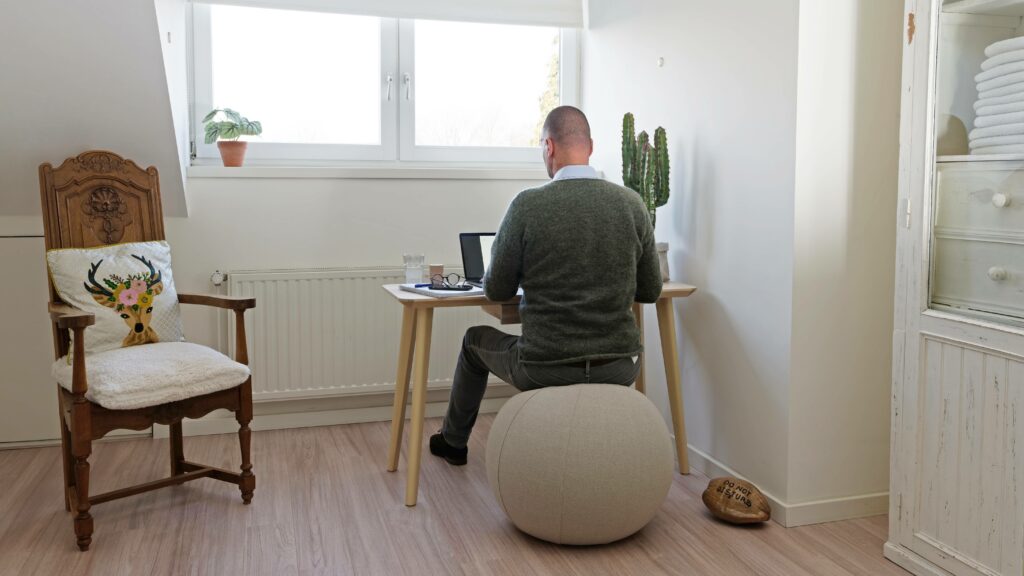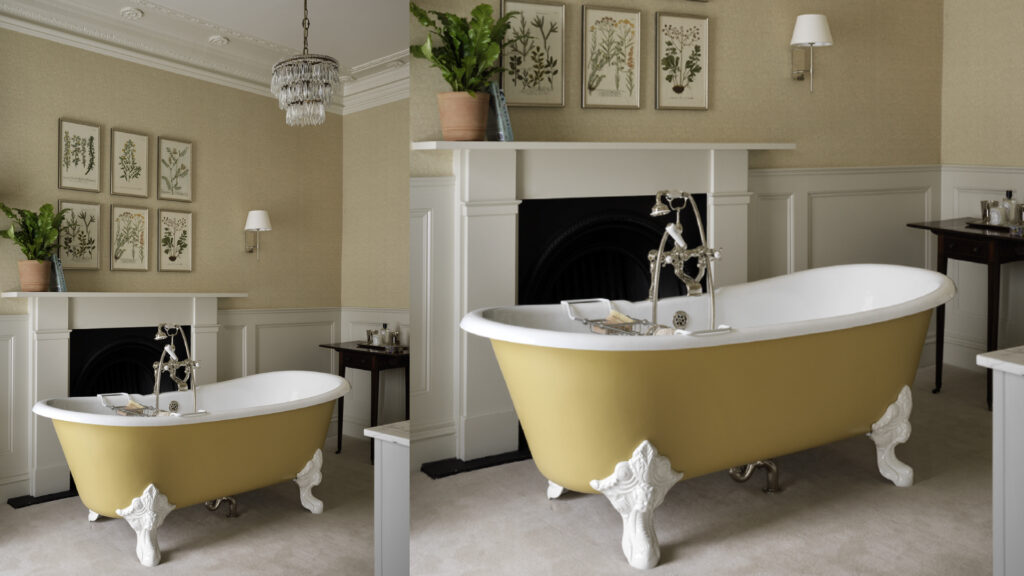
5 ergonomic accessories that can create a comfy workspace
Rosanna Spence
Boost your productivity and wellbeing
Since 2020, more of us now cook, sleep, work, craft, create and exercise under the same roof, a dramatic shift in lifestyle that many of us still haven’t really acknowledged – and the pandemic saw a large number of people decide to give up work for good.
However, the cost-of-living crisis has meant many people are returning to work to offset the rising prices – if that’s you, it might mean it’s finally time to invest in a space to work that isn’t ‘the corner of the kitchen table’.
Since 2020, more of us now cook, sleep, work, craft, create and exercise under the same roof, a dramatic shift in lifestyle that many of us still haven’t really acknowledged – and the pandemic saw a large number of people decide to give up work for good.
However, the cost-of-living crisis has meant many people are returning to work to offset the rising prices – if that’s you, it might mean it’s finally time to invest in a space to work that isn’t ‘the corner of the kitchen table’.
 Credit: Shutterstock / SeventyFour
Credit: Shutterstock / SeventyFourOr perhaps you’ve been meaning to create a dedicated workspace for your hobbies alongside an existing desk at home for some time and want to get started.
Either way, in a world designed to distract, creating a space that promotes focus and creativity – be that a home office or hobby room – is vital, especially if future workloads will fluctuate or the space will eventually function as an art studio or guest room.
With the right interior design, whether in a spare room or a spare corner, adjustable equipment and clever storage solutions can create a space where productivity (or that side-hustle) can flourish and help you create the all-important distinction between work, hobbies and day-to-day life.
Before we even pick up a paint brush or consider this year’s colour trends, where will your new home office or hobby room actually be? Some of you may be eyeing up a spare room; others without a separate space may wonder if that nook under the stairs could become your new creative hub.
If an external space, such as a shed or garage, is set to become the new workspace, this could spell the beginning of a full conversion project.
 Credit: Shutterstock / Lois GoBe
Credit: Shutterstock / Lois GoBeThere’s no doubt that this can be a costly process, and it’s worth considering what’s involved before you decide to turn your shed into an office.
Whether it’s located in a loft conversion or dining room corner, any home office or craft space should receive plenty of natural light
If the construction includes energy-saving features from the get-go, such as solar panels and insulation, you may be able to save on running costs in the future (and be much more comfortable if you can heat the space adequately).
“For people creating garden structures, there’s the opportunity to make them energy efficient, which is ever more important,” agrees Jason Wren, Director of Shape Architecture Ltd. “We can also incorporate features such as green sedum roofs and rooflights to flood the interior with daylight.”
Whether it’s located in a loft conversion or dining room corner, any home office or craft space should receive plenty of natural light, as this is known to aid productivity. That’s why investing in a skylight is worthwhile if the space is a little on the dark side – ideally with a curtain or blind fitted to adjust this light to avoid glare at certain times of day.
Cold draughts aren’t ideal (and neither is intense heat) but at least being able to control these elements by plugging in another heater or opening a window is a good idea.
The colour scheme of any home office or hobby room can transform your whole mindset when working. Of course, if these spaces are sitting within other rooms, we must consider how well accents of its design and the addition of any subtle colour scheme will integrate with existing décor.
“One of the finest colour families for a relaxing environment is green, so look here for a colour to create a calming, focused atmosphere,” suggests Patrick O’Donnell, International Brand Ambassador for Farrow & Ball.
 Credit: Farrow & Ball
Credit: Farrow & Ball“A gentle mid-toned green, from the more nuanced French Gray to the softest green neutral of Bone (the latter could be used on your woodwork), would lend themselves especially well here.
“These colours will create a perfect and sophisticated backdrop to work in, while creating a lovely environment for those ubiquitous Zoom calls.”
For creativity, Patrick suggests more vibrant shades (yellows and oranges are great at inspiring creativity), and they will also deliver warmth and depth, making them a perfect choice if you happen to have a darker space (a north-facing room, for instance).
How you furnish a workspace totally depends on the style of tasks you’ll be turning your hand to. Can your hobbies and work co-exist? Admin and creative writing can get along just fine, but if a computer desk needs to function as a textile cutting table, then a surface with an adjustable height, such as a sit-stand desk, might be a better choice.
“If the crafts you are doing are going to be messy then it’s likely you will need a desk and a table, one for your work and IT equipment and one for your crafts,” advises Rebecca Lenthall, Director of Your ID Interior Design Limited.
“Storage also plays a huge part in a successful design for any room, but especially when it comes to work or craft spaces. If you have the right amount of storage then when you have finished what you are doing everything can then be put away out of sight, and your room will look clutter-free. Bespoke storage is a great way of pulling in your colours and giving you the space that you need.”
 Credit: Shutterstock / Kostikova Natalia
Credit: Shutterstock / Kostikova NataliaVertical cupboards with removable shelves can adapt to what’s stored inside, and cleverly-dressed shelving can blend work, hobby and home objects as a visual cue for any multifunctional space.
In addition to a work chair (whether you opt for an ergonomic model or prefer a work bench), a plush armchair or sofa can create a relaxing spot for a hand-held hobby or focused reading. This could also pull out into a bed if the space needs to wear its guest room hat on the odd occasion.
If you need to quickly transform a workspace from desk-based to open plan, Wren suggests: “Flexible screens that fold back can be deployed to divide up a space, coupled with a desk that folds against a wall”.
So, you’ve chosen your space, painted the walls in a colour scheme that will help you focus and made those furniture choices that will organise the tools of your trade without compromising on style. Now it’s time for those all-important final flourishes that will really add character and define the personality of any workspace.
These choices are among the easiest to make when designing a room but end up having a huge impact on the way you feel when using the space, whether it’s lighting or foliage. Carefully chosen decorations can evoke a mood, help integrate or separate a workspace from its surroundings, and promote that much-needed focus and calm.
 Credit: Shutterstock / Africa Studio
Credit: Shutterstock / Africa Studio“Use plants and natural furniture incorporating rattan as a really easy way to bring calm and peacefulness, as well as offering different layers and texture,” suggests Lenthall. “Rugs are a great way of zoning areas within a room, as well as feeling nice underfoot, and a beautiful antique brass desk lamp will make any desk space look inviting,”
She adds that accents of your chosen colour scheme can be teased through chairs, cushions, throws and artwork, while useful shelving can be underlit with LEDs, giving the area an inviting, warm glow.
From keyboards to mood boards, any workspace design will work hard for you if it’s been inspired by how you want to feel when you’re absorbed in the task at hand there.
By incorporating thoughtful and flexible design into its DNA – the location, colour palette, furniture choices and ornamentation – any workspace will be able to further adapt to your needs more easily if it’s futureproofed for multipurpose use.

Written by Rosanna Spence she/her
Published: Updated:
Rosanna Spence has been a journalist for nearly 10 years, reporting on a huge array of topics – from microwaves to cocktails, sustainable buildings, the Caribbean islands and beyond. She’s interviewed chefs at the helm of Michelin-starred restaurants and chatted to countless CEOs about their businesses, as well as created travel guides for experienced travellers seeking life-changing adventures. Throughout her career, she has created content for Business Traveller, i-escape.com, Pub & Bar, BRITA, Dine Out and many more leading titles and brands.

Rosanna Spence

Rosanna Spence

Joy Archer

Joy Archer